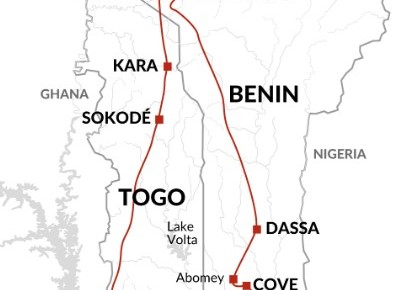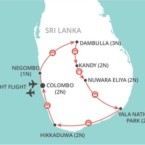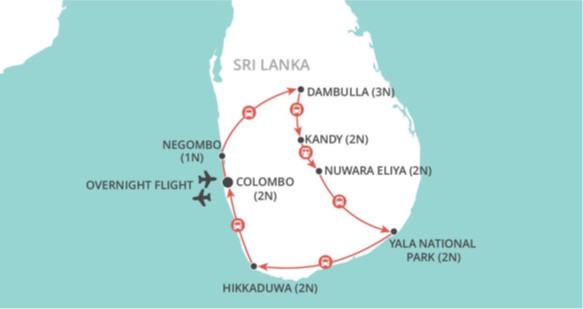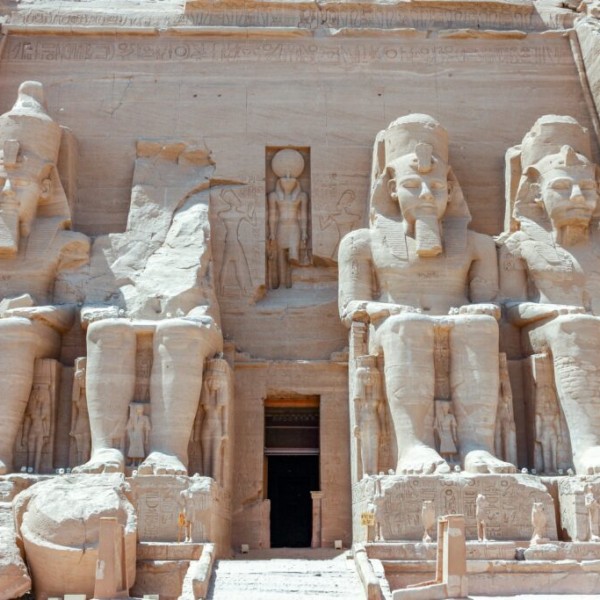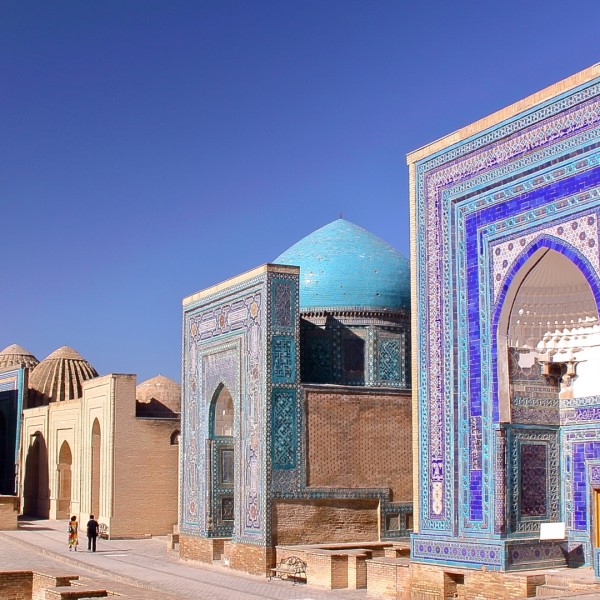Why book this trip?
This diverse trip through Benin and Togo is an opportunity to understand tribal cultures directly from a village Chief, discover the varied landscapes and learn about the controversial French colonisation and slave trade history.
- Voodoo – A unique chance to witness these intriguing and esoteric rituals
- Diverse landscapes – Spend a night in a remarkable stilt village on Lake Nokwe and walk through pristine rainforest
- Village Life – See traditional life up close and meet the friendly people of these two small but mighty West African countries
ITINERARY
- DAY 1 – Join trip in Lome
-
Arrive in Lome, the lively capital of Togo.
For those arriving on time our Leader plans to meet you in the hotel reception at 6pm for the welcome meeting and for those that wish, there is the chance to go out for dinner.
There are no other activities planned today, so you are free to arrive in Lome at any time. If you would like to receive a complimentary airport transfer today, you’ll need to arrive into Lome Tokoim International Airport (LFW), which is about 15 minutes’ drive from the airport. Should you miss the welcome meeting, your Leader will inform you of any essential information as soon as you catch up.
If you have free time on arrival then you may choose to walk through the bustling streets, relax or visit the Museum of the Arts – ‘Palais de Lome’. Dating back over 100 years, the building has been used as the French governor’s residence, the seat of Togolese presidency and also the residence of the Prime Minister before being abandoned. The 11 hectare park surrounding the palace is now home to a number of gardens and sculptures. We would suggest speaking to the hotel reception if you would like to visit so that they can assist with arranging a taxi.
- DAY 2 – Lome city tour; Drive to Kpalime
-
After breakfast and our Welcome Meeting this morning, we will kick off this West African adventure with a guided tour of the city. Once an important landmark within West Africa’s notorious slave trade, Togo was colonised in the 15th century and this can still be seen today in the faded European architecture and tree-lined boulevards. We’ll visit the colourful market and Togo’s famed fetish market where locals and voodoo priests alike, can source anything from good luck charms to animal skulls to aid their pursuit of bringing themselves good fortune and health.
This afternoon we will drive to Kpalime, Togo’s 4th largest city which is surrounded by tropical forest. This area is Togo’s biggest producer of artisanal items including pottery, weaved items and wood sculpture, and we’ll visit the Centre of Artisans to see their work.
- DAY 3 – Guided rainforest butterfly walk; fire dance in the evening
-
Today we will start with a half day, guided hike through the rainforest. Following well-marked tracks we will be hiking for five to six hours guided by a butterfly expert. Along the trails we’ll learn about the important and delicate eco-system in the forest, where over 500 species of butterfly can be found. The walk is mainly flat terrain but will be humid and warm, so insect repellent and sun protection is recommended.
This afternoon we drive north to Sokode for approximately five hours. As we travel we get a good insight into the country’s culture as we stop to visit local villages, experiencing the smells and sounds of the colourful markets. In the evening we witness a traditional Fire Dance. Dancing to the hypnotic beat of the drum, the dancers eventually leap into the glowing embers. They then pick up burning coals and pass them over their body and mouth without showing any pain or injury. Whether it is a matter of courage, magic or auto suggestion, witnessing these rituals is a real privilege and a truly interesting experience.
- DAY 4 – Drive to the Bassar region. Visit the clay houses and learn about the iron production
-
Today we travel towards Kara with stops along the way to meet the Bassar people. The Bassar live in traditional large clay houses with conical roofs and produce iron following an old traditional procedure. Strict rules have to be followed: only old women should provide the coal needed, which they collect from the mountains surrounding the villages. According to their belief, the iron would only melt under particular circumstances and if a strict code of conduct is observed. Our leader will also see if it’s possible to meet a traditional Chief who will talk to us about their role in the society and leading their village. We’ll arrive in Kara in the early evening.
- DAY 5 – Visit the Kabye region and meet the Tamberma people in the Atakora mountains
-
This morning will be an early start to be begin our journey into Benin. The first part of our drive is through a mountainous region where the Kabye people reside. The Kabye are excellent blacksmiths who still work with traditional methods that have been lost in the Western world. After visiting the communities here, we reach the Atakora Mountains, a chain of mountains that starts in south east Ghana and cuts through Togo and Benin and have offered a refuge for the Tamberma people for generations. We’ll join the track through this region, offering opportunities for us to see the fortified dwellings of the Tamberma; their clay castles are revered throughout Africa. With phallic shaped fetishes adorning the entrance to their houses and surrounding wall representing the spirits of their ancestors, these isolated homesteads could feasibly hold out in a siege situation and offer a great base from which to protect themselves against enemies.
We’ll stop somewhere close to the border for a lunch break before crossing into Boukoumbe, Benin in the early afternoon. The drive to Koussou is only another 30km, however the road condition varies and along the way we will stop at a Somba village and viewpoints to catch a great photo over the Benin landscape.
- DAY 6 – Walk in the Atakora Mountain range and meet the Somba people
-
An early start this morning, ahead of a day walking in this remarkable region, discovering some of the villages in the Atakora Mountains. We’ll be walking for around six to seven hours over undulating hills along visible trails with plenty of stops along the route. We will have the chance to meet the Somba people (this word means nude in the traditional language) whose traditions have not yet been changed by outsiders, due to their geographic isolation. Similar to the Tamberma architecture, the Somba architecture is characterised by dwellings that resemble a three storey castle. These beautiful fortifications are separated from the others depending on the ownership of fertile land.
Walking shoes and walking poles are recommended for today. The terrain can be rocky in places with some ascents and descents. With warm temperatures sun protection and insect repellent are essential.
- DAY 7 – Drive to Natitingou; discover the town with its museum and market and then relax by the pool
-
We’ll have a more relaxing morning today, setting off around 8.30 on the three hour drive to Natitingou. Arriving in time for lunch, our leader will give us some information about the town before a free afternoon. There will be time to discover the town or relax by the pool in the hotel. The town hosts a market and an interesting museum about the people living in the Atakora Mountains. The museum is located in a French colonial house built in 1915. Our hotel this evening is built in the style of the Tamberma people, although a little more modern!
- DAY 8 – Walk on the Taneka plateau visiting the Yom people. Afternoon drive to Dassa
-
This morning we’ll depart early driving to the village of Taneka Beri at the base of the Taneka Plateau, where we will start our walk. We’ll be walking for four hours throughout the morning, ascending the plateau along a rocky track to discover the ancient villages of the Yom who reside here. The Yom People live in round huts covered with conical roofs and decorated with terracotta vases. The upper part of each village is inhabited by fetish priests, dressed in a goatskin and their young initiates.
In the afternoon we drive south for around five hours to Dassa where we’ll spend the night.
- DAY 9 – Visit the town of Dassa and then the Royal Palace of Abomey
-
We start our day exploring Dassa, which used to be the capital of an ancient kingdom in 1385, by visiting Sacred Hill where funerals for the royal family take place accompanied by Voodoo practices. We’ll the drive three hours to the town of Abomey, where we’ll visit the Royal Palace with our leader to discover the ornate majesty that was once the Dan-Homey dynasty. Now a museum, the Palace walls are still decorated with bas-reliefs representing the symbols of the Dahomey kings and its halls and rooms hold the thrones and altars, statues and arms of a kingdom that lived in a perpetual state of war and built its greatness on the slavery of its neighbours. In the centre of the royal courtyard is the House of Pearls, a temple built by king Glele to honour his father’s spirit, the walls made from a mixture of clay and human blood! We’ll arrive in Cove in the last afternoon, our base for the next two nights.
- DAY 10 – See the incredible Egun and Gelede mask ceremonies
-
This morning we are lucky enough to witness an Egun mask performance. According to the local tradition, people perform the rituals not only to represent but also to embody the spirits of the ancestors. Dressed in bright, colourful costumes, they emerge from the forest and form a procession through the village streets.
This afternoon we also have the opportunity to visit a Gelede mask ceremony. A cult to the great divinity Oudua, the earth mother, Gelede is a cult, a secret society and a type of mask all at the same time. The brightly coloured masks represent the bridge between the society and the ordinary villagers and are comprised of a head with large eyes and sensual lips over which are an animated collection of characters and objects that tell stories, to the accompaniment of a choir and an excited audience. This is a really special day as we encounter contrasting ceremonies, both very different and yet equally memorable.
- DAY 11 – Travel to incredible stilt village of Ganvie to spend a night in a stilt guesthouse
-
We spend this morning travelling by bus and boat to Ganvie, the largest stilt village in Africa. Settled by the Tofinou people, fleeing the slave traders of the 16th century, the village today is an atmospheric setting of thatched huts, balanced on stilts of teak, where daily life is still very much conducted on the waters of the lake. Fishing is still the principal activity for the inhabitants and every day the men go about their business, whilst women deliver their goods to the floating market and children go to school and play from the backs of open pirogues. But even amidst this tranquil aquatic idyll voodoo plays its part; after a relaxing afternoon we’ll meet a local Bokono oracle, a village soothsayer, this evening. We’ll learn how these traditional people are guided through life by the drums and dancing of voodoos haunting rhythm.
- DAY 12 – Visit Ouidah, the spiritual home of Voodoo; drive to Grand Popo
-
We’ll depart Ganvie after breakfast, and travel by boat and bus on to the town of Ouidah, considered to be the spiritual home of voodoo. Once an infamous part of the old slave route, Ouidah was the site of one of the largest trading posts, supplying slaves to Europe and its outlying colonies. The echoes and ghosts of those infamous days still reverberate today, in its Afro-Portuguese architecture. We aim to spend some of our time here visiting the museum at the Old Portuguese Fort and taking a walk along the slave route to the beach, where the unfortunate victims were loaded aboard the slave ships. We will also visit the remarkable Python Temple, where Ouidah’s ancient snake cult is still very much in evidence. Snakes are still an important feature of many voodoo rituals, believed to be able to imbue vitality and protection. Later we head east for two more hours towards the Gulf of Benin where we’ll stay in Grand Popo.
- DAY 13 – Zangbeto dancing mask ceremony and afternoon voodoo ceremony
-
We depart after breakfast this morning by bus for a short distance before we swap into boats for a 5 minute journey to a small village where we will see our last mask ceremony, the Zangbeto. The masks for this ceremony are full body, straw decorations and the wearers of these masks keep their identity hidden as part of a secret society of traditional Voodoo guardians.
Later this morning we’ll cross the border back into Togo, where we’ll continue for a short while before stopping in Aneho, a village of thatched houses with shrines and fetishes, and there may be an opportunity to watch a Voodoo ceremony. During such a ritual we will see traditional dancers falling into a deep trance at the hypnotic rhythm of drums. After the ceremony we meet a traditional healer who treat the patients with voodoo rites and herbs. Later this afternoon, we continue 90 minutes towards Lome where there will be time for a last minute trip to the bustling market before our last meal.
- DAY 14 – Trip ends in Lome
-
The trip ends after breakfast at our hotel in Lome.
There are no activities planned today, so you are free to depart from Lome at any time. If your flight is departing early in the morning, breakfast will be served very early. If your flight is departing later in the day, luggage storage facilities are available at our hotel. There may be the option to pay for a day room at €30, which is subject to availability at the hotel.
If you would like to receive a complimentary transfer today, you need to depart from Lome Tokoim International Airport (LFW), which is about 15 minutes\ drive from the airport.
Inclusions
INCLUDED MEALS
Breakfast: 13
Lunch: 9
Dinner: 2
TRIP STAFF
Explore Tour Leader
Cook
Driver(s)
Local Guide(s)
TRANSPORT
Bus
Boat
ACCOMMODATION
1 nights simple auberge
1 nights simple guesthouse
9 nights comfortable hotel
2 nights simple hut
Images Courtesy of Explore Worldwide
EXW – BWA
Related experiences
Africa by Rail: Hosted Luxury Rovos Safari 2025 – Departs 28 August 2025
Tour Description Africa by Rail , a 10 day luxury Rovos Rail Safari, hosted by Rachel Williams – Founder and Adventure Guru from Viva Expeditions. Johannesburg to Victoria Falls, 28 August – 6 September 2025 Join us on an exclusive … Continue reading →
Norfolk Island & NSW Including Sydney Harbour Cruise – Departs 20 February 2025
Tour Departs: 20 February 2025 Tour Length: 16 Days Price From: Share Twin NZD $11,700.00pp | Supplement for Single Room NZD $2,750.00pp | Total Cost for Single Room NZD $14,450.00pp Where history meets paradise, experience the “Norfolk Wave.” Explore lush forests, pristine beaches, … Continue reading →
Japan in Autumn including Circle Japan Cruise – Departs 11 October 2024
Tour Departs: 11 October 2024 Tour Length: 27 Days We are venturing to Japan, Land of the Rising Sun, in time to enjoy the beginning of the autumn season. Autumn in Japan is about crimson leaves and perfect weather. As summer transitions … Continue reading →
CROSSROADS OF THE CAUCASUS – Escorted Tour – Departs 04 May 2025
Small group hosted journey • Guaranteed to go • Flights included Introduction Discover the exotic history and culture of the Caucasus on this hosted journey through Istanbul, Georgia, Armenia and Azerbaijan. Explore the ancient birthplace of viticulture and wine-making in … Continue reading →
Fabels of the Silk Road – 29 Days Escorted Tour – Departs 16 September 2025
Small group hosted journey • Guaranteed to go • Flights included Introduction Explore the cultural diversity and wonderful scenery of the ‘Five Stans’ of Central Asia. This varied landscape is home to traditional villages, ancient towns and glorious cities with … Continue reading →
Mexico Unveiled – 24 Days Escorted Tour – Departing 27 October 2025
Introduction Immerse yourself in the vibrant tapestry of Mexico on this unforgettable journey. From the turquoise waters of the Maya Riviera to the ancient wonders of Teotihuacan, we’ll journey through history, culture, and breathtaking natural beauty. Explore Maya ruins kissed … Continue reading →
Highlights of Sri Lanka for Solo Travellers – 17 days Fully Inclusive Group Tour – Departing 22 November 2024
Departing 22 November 2024 Highlights of Sri Lanka for Solo Travellers Negombo (1N) – Sigiriya (3N) – Kandy (2N) – Nuwara Eliya (2N) – Yala National Park (2N) – Galle (2N) – Colombo (2N) From stunning scenery to amazing architecture, … Continue reading →
Petra to the Pyramids – Departing 24 October 2024
TWIN from NZ$22,598 per person, SINGLE from NZ$26,905 From floating in the Dead Sea more than 400 metres below sea level, to walking through the Siq for your first glimpse of the soaring facade of the Treasury at Petra. From … Continue reading →
Escorted Tour to Vietnam & Cambodia with Anzac Memorials – Departing 01 April 2025
Historic Vietnam & Cambodia Exclusive Escorted Cruise & Land Tour – Auckland Return Tour Northern Vietnam, cruise the Mekong Delta, & visit ANZAC Memorials Escorted from NZ by Mark Nicholls of Mekong Princess Fly, Cruise & Land Tour Auckland – … Continue reading →
Silk Road Odyssey – 29 Days Escorted Tour – 2 departures, departing Christchurch 03 & 10 May 2025
29 Day Small Group Escorted Tour 03 – 31 May 2025 & 10 May-7 June 2025 Escorted by Discover Travel’s Peter Dunne & Lyndon Hadden Tour price from $19,495 per person twin/double share* $22,995 per person in a single room* … Continue reading →





